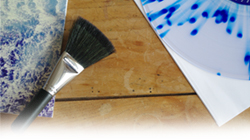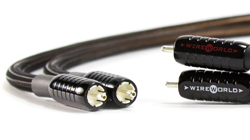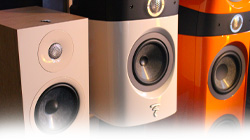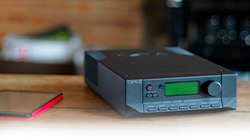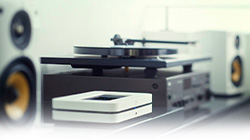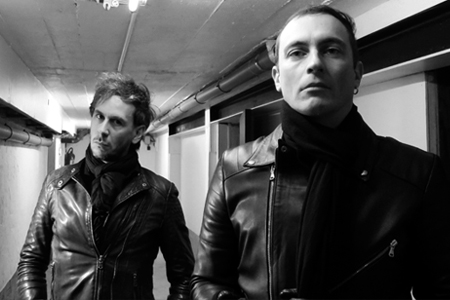
Reviewed in our vinyl records selection of May and June 2018, we wanted to make you discover the band VARSOVIE! The member of the band, Arnault Destal and Grégory Catherina, were kind to answer our questions and tell us more about their career.
Music career
– WHAT IS YOUR MUSICAL BACKGROUND?
Grégory Catherina: I began playing guitar in 1994, thanks to a friend who had not been playing long. We started with classics (Maiden, Metallica, U2, The Doors…) to learn how to play together. Four years later, Forbidden Site hired me as guitarist for their last album. After the split, we founded Varsovie in 2005 with Arnault. Meanwhile, I started to sing.
Arnault Destal: I played on a real drum for the first time when I was 17 yo, and then I joined a cover band playing between Sisters of Mercy, Cure and New Model Army. The musical repertoire was good, but I had no interest about it. Six months later, after an important meeting, I founded Forbidden Site in 1994, an avant-garde Black Metal band that would release an EP and two albums that were quite notable for the scene at the time.
When the creative duo I was part of split, I continued to play with Greg, but from far, without really believing in it. The experience had been too intensive for me to get involved again, and I did not want to carry on by default. I had to wait until 2005 to be ready and for the flame to come back. The advantage is that this lost time has allowed us to hold on to a line and also to build a friendship. I think that is been our course ever since.
– WHERE DOES THIS PASSION COME FROM?
G.C: It came to me when I was very young, with the discovery of some important bands of the 80s and a fascination for unique electric sounds. This haunted me for a long time, before I actually started playing the guitar.
A.D: Undoubtedly, in reaction to a rather pessimistic childhood. The only way to afford a cheap horizon, when the idea of a horizon seems like a big joke. For that, music and literature have been complementary. Instinctively, I quickly went in search of dark, quirky, atmospheric underground productions… Teenager, post punk and black metal were my two major hunting grounds, but not the only one. Baroque music as well.
– WHAT MADE YOU WANT TO BEGIN YOUR OWN BAND?
G.C: Belonging to music. Honoring the musical heritage that has marked me. The music chooses you. Not vice versa. It forms you, sends you back to reflection and to the discovery of so many other things. I think about literature, cinema, painting… You cross bridges and span fences.
A.D: Maybe the feeling that I had something to tell, thinking naively that others would find themselves through some visions, landscapes that haunt me, anger, obsessions, frustrations, and also moment of grace. And also, in face of the disgust that the world inspired in me at this time, the desire to create something dedicated to conspiracy, a covenant, a fraternal commando, working against the tide and on the fringes, and playing on stage as if on assault. This primitive idea is still there. In background.
– AS MUSICIANS AND COMPOSERS, WHAT ARE YOUR MAIN INFLUENCES? BOTH MUSIC AND LITERATURE?
A.D: Lists of writers are always a quite boring, but reacting on what has been said before, any sincere and deep work can challenge us. Regarding to precise references, they are sometimes obvious in our albums, otherwise we have to dare to get lost between the lines, even if it means finding things we have never thought of.
Here, we clearly meet (because the lyrics deal with them) the ghosts of Sergeï Essenine, Jacques Rigaut, Sunsiaré de Larcône et Nimier, Cesare Pavese, Francis Scott Fitzgerald, Schnitzler, Nerval, Tolstoï, Mishima and others…
We can give you some artists names, such as The Sound, Joy Division, Siekiera, Alain Bashung, Bauhaus, Nick Cave and the Bad seeds, Alain Bashung, Bauhaus, Nick Cave and the Bad seeds, the Polish of 1984, the very firsts Noir Désir, Marquis de Sade, Murat, or And Also the threes have been inspirational, but as many others… Atmosphere often inspires us more than the way to play or gimmicks…
VARSOVIE history
-YOUR BAND IS CALLED VARSOVIE. WHAT DOES IT MEAN FOR YOU?
G.C: We opted for Varsovie by translating names of foreign bands we love, in order to see, and because the name we had previously chosen looked unpronounceable… Varsovie came down at a moment, the first version of Joy Division. In addition to a nob to an essential band, the name immediately seemed obvious to us, because we had just release a song dealing with the city’s rebellion in 1944…
A.D: In the name, there is a mixture of cold exoticism, strangeness, heartbreak in the name, but also something deeply French and familiar, it fits pretty well in the end.
– CAN YOU TELL US MORE ABOUT THE HISTORY OF VARSOVIE?
G.C: I had been following Arnault’s first band for a while in Grenoble and when they were looking for a second guitarist in the summer 1998, I applied directly. I do not know why, but deep inside me, I knew that I will be hired. But the band was nearing its end… Varsovie’s beginnings were in the chaos described above. We immediately did a lot of concerts in our town, when it was still possible. The scene is so important to us.
After the release of our EP “Neuf millimètres” in 2006, we started touring a lot in France and Europe. This will be followed by the albums “État Civil” (2010), “L’Heure et la Trajectoire” (2015) with Infrastition and Those Opposed Records, and “Coups et Blessures” released this year with Sundust Records.
-BLACK METAL, POST-PUNK, ROCK… HOW COULD YOU DESCRIBE VARSOVIE’S MUSIC STYLE?
A.D: Rock between dog and wolf that shoots post-punk, and vice versa.
– IN MAY 2018, YOU RELEASED YOUR THIRD ALBUM ENTITLED “COUPS AND BLESSURES”. HOW WAS THE CREATION PROCESS?
A.D: After signing on Sundust Records, we booked a session at the Drudenhaus studio in the French Brittany countryside with Benoît Roux, for fall 2017. This is also where we had recorded the two previous ones, so we knew the house well: fields, fog, cows, cats, old stones and three weeks cut off from the rest of the world…
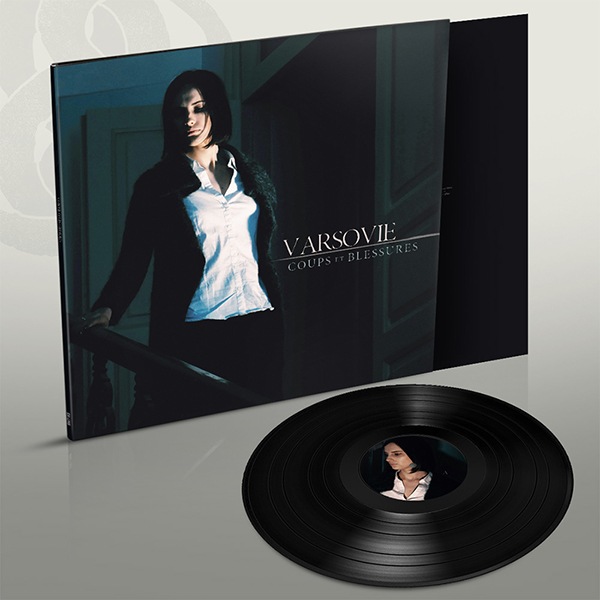
It was composed in the similar way as the previous ones, with its share of doubts, torments, but also with some illuminations which, in themselves were worth the effort. As always, our songs come from different eras. We give ourselves a few surprises in studio (good ones if possible, because bad ones happen too…) including arrangements, overdubs and effects, but everything is planned in advance. Anyway, I think we are closer and closer to our dream sound.
– HOW DO YOU ORGANIZE YOURSELF IN THE BAND?
A.D: Greg is in charge of finding all the riffs at his home or improvising with me on the drums. I record, and then search the vocal lines and write the lyrics. Then Greg works on the riffs. I give him voice demos and once he gets into the stuff, we test it and look for arrangement ideas. We can also start from a bass, a rhythmic… Everything is possible, but the overall process remains identical. In the same time, I manage the side stuffs… Image, management, etc.
– WHAT INSPIRED YOU FOR THIS THIRD ALBUM?
A.D: When we wrote the song “Coups et Blessures”, we immediately knew it would be the title song. As I mentioned at the launch of the clip of the same title, it is a reference to the blows and wounds that we suffer from or inflict on ourselves, with the idea of treating them with a kind of detachment, as if it were no longer a question of avoiding them, but only of listing them; a collection of events brought to reproduce themselves with more or less intensity. There is also the idea of get by, going on despite the failures, despite the loss, whatever it may be. A mix of coldness, melancholy and retained violence that represents Varsovie and this album.
– YOU JUST RELEASED A NEW MUSIC VIDEO. CAN YOU TELL US MORE ABOUT THE FILMING, THE CHOICE OF DIRECTING, ETC.?
A.D: Thanks to Sundust, the music video for Killing Anna has been directed by Guilherme Henriques in Portugal, with the actress Teresa Queirós. As for the previous music videos, I translated the lyrics, gave guidelines, as well as atmospheric keys and vague indications. The goal is also that the director takes our song and adds his proper vision to it, that it is not just a control work, but a new creation from a creation. Something nocturnal, disturbing was needed, with the spirit of a Film Noir and an increasing tension subtly wrapping itself around the music.
There is in this song the notion of a cold revenge, a disturbing vertigo, with references to the death of Anna Karénine. Someone is walking in someone else’s footsteps, maybe a double. Something tragic is coming.
-YOU ALSO NOTICE THAT THERE IS ALWAYS A FEMININE REPRESENTATION ON THE COVERS OF YOUR LPS. WHY THIS CHOICE?
A.D: It is been like that since our demo and it just came naturally. These women are usually allegorical most of the time. They are at the same time a mental season, a state of mind, an idea, a way of living in the world, a way of facing abjection. It is a like some of the ancient idols and also those characters that we used to see on Art Nouveau posters.
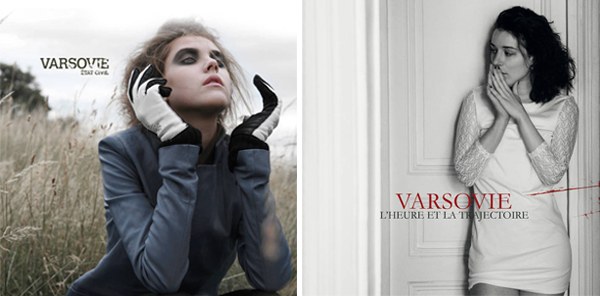
– BETWEEN TOURS IN FRANCE AND ABROAD, RECORDINGS, ETC… HOW DO YOU MANAGE EVERYTHING?
G.C: You have to dedicate yourself to it like a vocation. Making choices, having priorities, which sometimes involves sacrifice.
A.D: In terms of composition, concerts and recordings, it is a choice. That is what we want to do. It is a question of time to free up beyond our daily obligations. For the rest, by this I mean promotion, requests, organization, imagery and much more, I must admit that at times I am saturated by the need to be highly versatile and reactive or by certain absurd attitudes, particularly in all aspects of canvassing. I do not feel always adapted, or adaptable, so to speak. Actually, the space-time dedicated to pure music is very limited.
I spend more time dealing with contours than I do writing, composing or even just drumming for the form. Creative time is luxury.
Of course, we are not the only ones in this case, it is not a complaint, but I think that a lot of people do not realize the gap: technically, our core business is the one we can spend the least time on. Luckily, since we have been at Sundust, there’s been real support on that side.
Even psychologically, it makes actions less vain and loosens the teeth a little.
VARSOVIE and the vinyl
– AS A MUSIC BAND, HOW DID YOU EXPERIENCE THE DROP IN CD SALES AND THE STRONG COMEBACK OF VINYL RECORDS?
G.C: Bad. Less points of sale devote importance to rarity, strangeness. What was quite natural to get hold disappears, and a lot of albums are separate records or UFOs when they were not, or less, 25 years ago. For the vinyl record it is a good thing.
A.D: I would not say that nature is afraid by emptiness, since this kind of sentence tires everyone, but beyond this collapse, there is a fall of the listener. It is not his fault, it is the context that has changed. Listening to an album, whatever the support is, required a minimum investment before the YouTube and Co. generation. And the whole thing, right off the broadcast side.
I remember that in the 90s, even then, each album purchase was thought out in advance and necessarily implied a risk (inevitably, this risk varied depending on the buying power…) but it was also very exciting, in case of “success”, especially since I personally did not know anyone close to me who was really interested in the music I was looking for.
We had to get by without holding hands, with fanzines, obscure local radio shows, mail order entertainment and follow our instincts to sort things out. The evolution was slow. The quest meant something. Sometimes a cover or a simple name was necessary, we tried… If it did not work at the first chords, before we thought we had screwed up or that it was a shitty album, we still made the effort to really listen to the songs, which paradoxically gave more chances to pointed, deep music that needed a bit of attention.
I do not want to play the old-fashioned way and I’m not saying it was better before, since I am quite happy to also enjoy discoveries just in few clicks, but it is a simple observation. Less passion, too much production. Without mentioning that everything has to be pre-chewed, without mentioning the flash expiry of the albums, without mentioning all these prefabricated bands endorsing the panoplies of this or that style from one day to the next one, performing like soul-less little school geniuses, which inevitably does not encourage “respectful” listening, as this kind of packaging formations literally do not give a damn about the listeners…
So, in return, you zap, you look for possible hits and you forget… You can no longer distinguish between what is sincere and what is not. Everything is in the same bag. An amount of data that can be accessed without effort changes the listening experience. The revolution is nearly of the order that must have taken place when we were able to start engraving music for commercial use. The relationship necessarily changes when a work can be listened to infinitely, at home…
Maybe the return of vinyl will curb this sinister dynamic a little, think there is a demand for it, a fast-food listening lassitude, hoping it does not become part of some kind of episodic revival. The vinyl process itself is part of another dimension, almost ritual, and implies devoting time to it… That’s a good thing.
– ARE YOU VINYL LOVERS?
G.C: Yes I give a lot of attention to vinyl and try to find some when the opportunity presents itself.
A.D: It is the moment in the interview where I feel like an impostor, not really having had any vinyl culture. When I was a teenager, there was no turntable available, the only way to listen to albums was on tapes. I listened to a lot. Some lived badly through intensive listening. Then the laser came. My very first discs were CDs. I think it was “The Sky’s gone out” by Bauhaus and “Into Darkness” by Winter, around 1990… Both covers were enigmatic and in black and white, it had nothing to do with it, but for me it fitted. I got into vinyl records much later, even though they have always fascinated me and I cannot see myself releasing an album without it. Now, ironically, it is for playing the tapes that I do not have any left, even though I still have a stock of them.
– ON WHICH MODEL OF TURNTABLE DO YOU LISTEN TO YOUR RECORDS? WHAT IS YOUR HI-FI SYSTEM MADE OF?
G.C: I listen to my vinyl records on basic but solid material. Two Philips speakers taken from an 80’s Hi-Fi system. A Technics amp and a Pro-Ject Audio Systems turntable.
A.D: On a portable turntable whose manufacturer I have forgotten, but which sounds great to me, especially since it is a gift that is special to me, most of the time connected to a Technics system that also does the job.
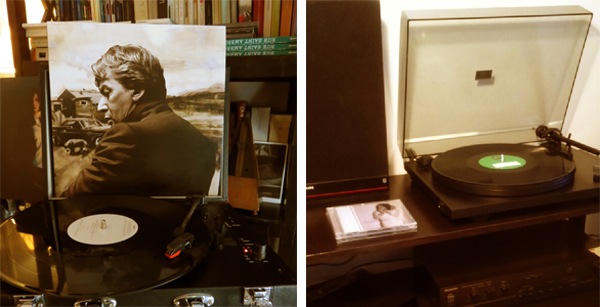
– WE HAD REVIEWED YOUR LAST ALBUM IN OUR RECORDS SELECTION OF MAY AND JUNE 2018. NOW, WHAT WOULD YOUR TWO RECORDS BE AT THE MOMENT?
A.D: Nothing new. Two albums that I had, one on tape and the other on CD, and that I was offered recently on vinyl record: « Reign in Blood » by Slayer (1986) and « Bleu Pétrole » by Alain Bashung (2008).
G.C: « Tocsin » by X-mal Deutschland and « Shock of Daylight » by The Sound.
– A FINAL WORD TO ADD FOR THOSE WHO WOULD DISCOVER YOU?
A.D: Thank you for your work and support, and thank you to the readers for having kept up to now 🙂



